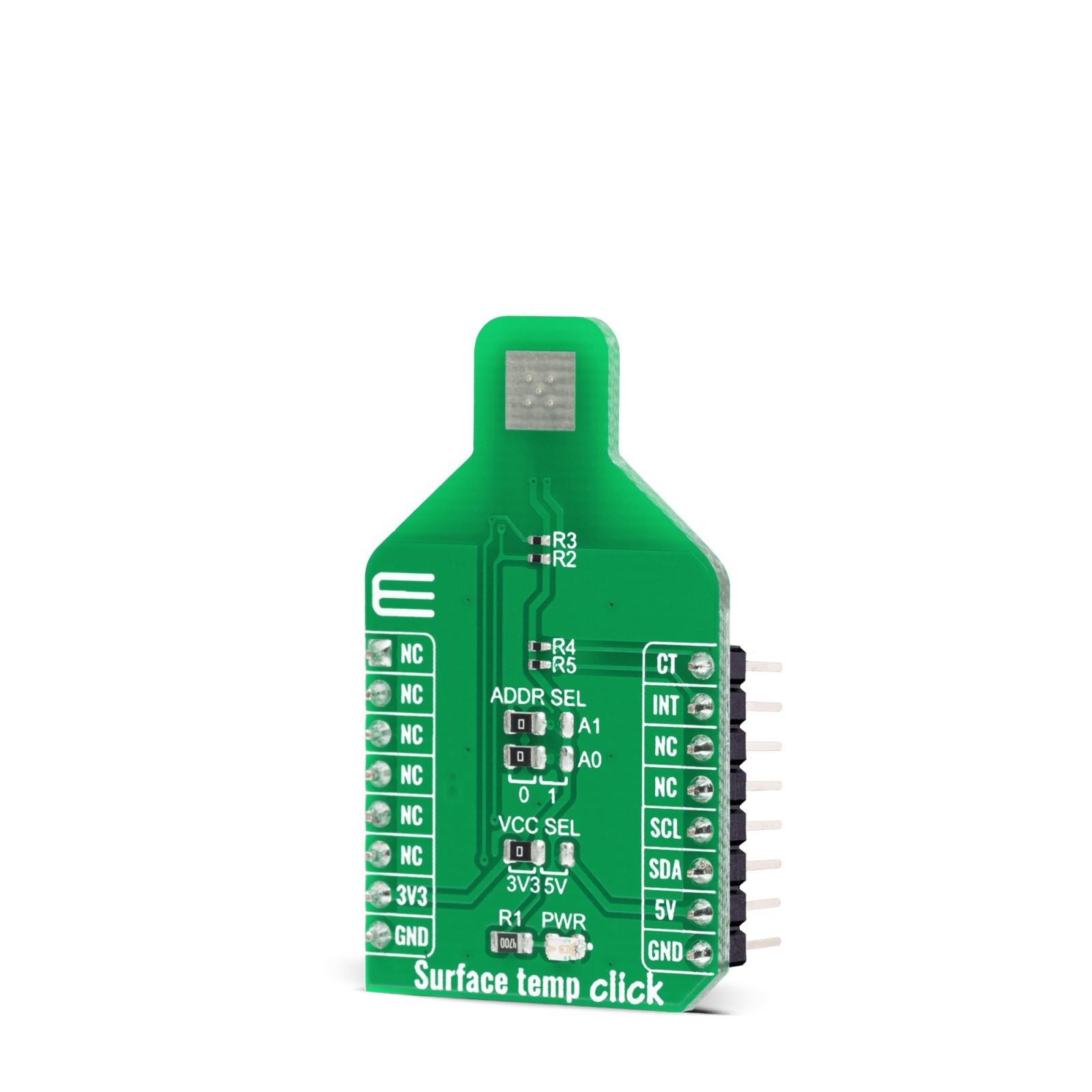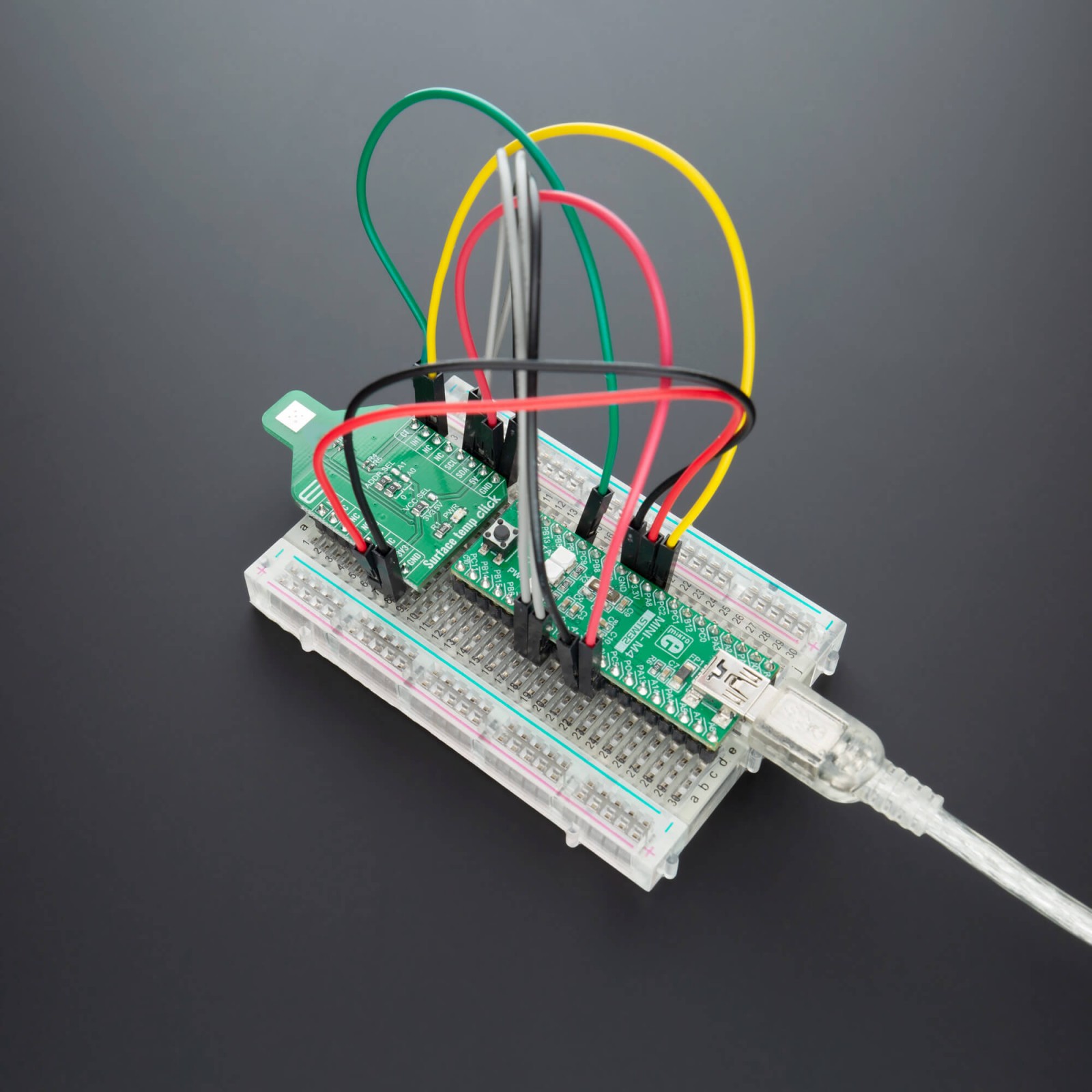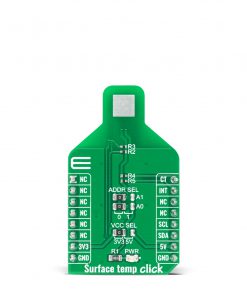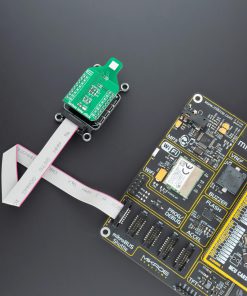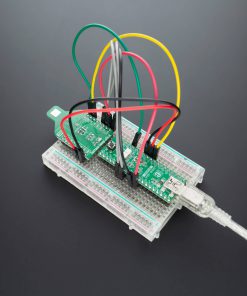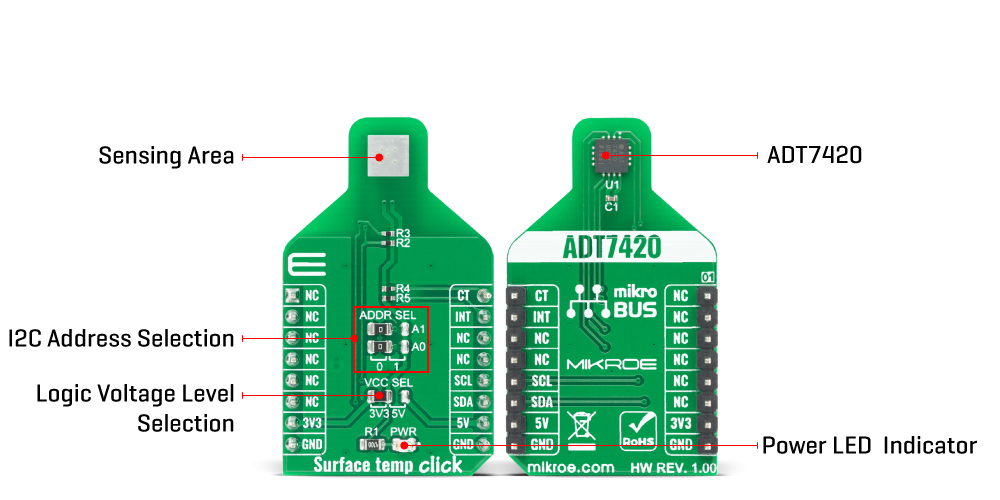Surface temp Click
R575.00 ex. VAT
Surface temp Click is high accuracy digital temperature sensor Click board™, offering breakthrough performance over a wide industrial range. It is equipped with the ADT7420 – an accurate 16-Bit Digital I2C temperature sensor from Analog Devices. It features high temperature accuracy, ultralow temperature drift (0.0073°C), fast first temperature conversion on power-up, no temperature calibration/correction required, and more. This makes the Surface Temp Click board™ a great choice for RTD and thermistor replacement, medical equipment, food transportation and storage, environmental monitoring, HVAC, and other applications.
Surface temp Click is supported by a mikroSDK compliant library, which includes functions that simplify software development. This Click board™ comes as a fully tested product, ready to be used on a system equipped with the mikroBUS™ socket.
Stock: Lead-time applicable.
| 5+ | R546.25 |
| 10+ | R517.50 |
| 15+ | R488.75 |
| 20+ | R470.35 |


